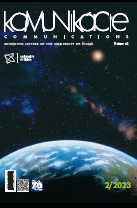Developing Pedestrian Fatality Prediction Models Using Historical Crash Data: Application of Binary Logistic Regression and Boosted Tree Mechanism
Developing Pedestrian Fatality Prediction Models Using Historical Crash Data: Application of Binary Logistic Regression and Boosted Tree Mechanism
Author(s): Malaya Mohanty, Bitati Sarkar, Piotr Gorzelańczyk, Rachita Panda, Srinivasa Rao Gandupalli, Ampereza AnkundaSubject(s): Economy, Tourism, Transport / Logistics
Published by: Žilinská univerzita v Žilině
Keywords: Pedestrian fatalities; vehicle category; 85th percentile speed; binary logistic model; boosted tree model
Summary/Abstract: Pedestrian fatality rate plays a key role in examining effectiveness of the road safety. The present study attempts to examine the effect of various categories of accused vehicles and the average 85th percentile speed at accident location on the pedestrian crash fatality. The study also attempts to develop pedestrian crash severity models using the binary logistic regression and boosted trees technique. Historical crash data, along with the video recording technique at accident sites, have been utilized for the present study. From regression equations, it is observed that when the heavy vehicle (HV) hits a pedestrian as compared to two-wheeler (2W), the average chance of death increases 2.44 times. According to the Boosted tree model, the contribution of speed is 60 %, whereas the contribution of category of accused vehicle is 40 % for pedestrian fatality prediction. The study should help in planning better strategies like all red time at intersections or pedestrian foot over bridge at critical locations.
Journal: Komunikácie - vedecké listy Žilinskej univerzity v Žiline
- Issue Year: 25/2023
- Issue No: 2
- Page Range: 45-53
- Page Count: 45
- Language: English

